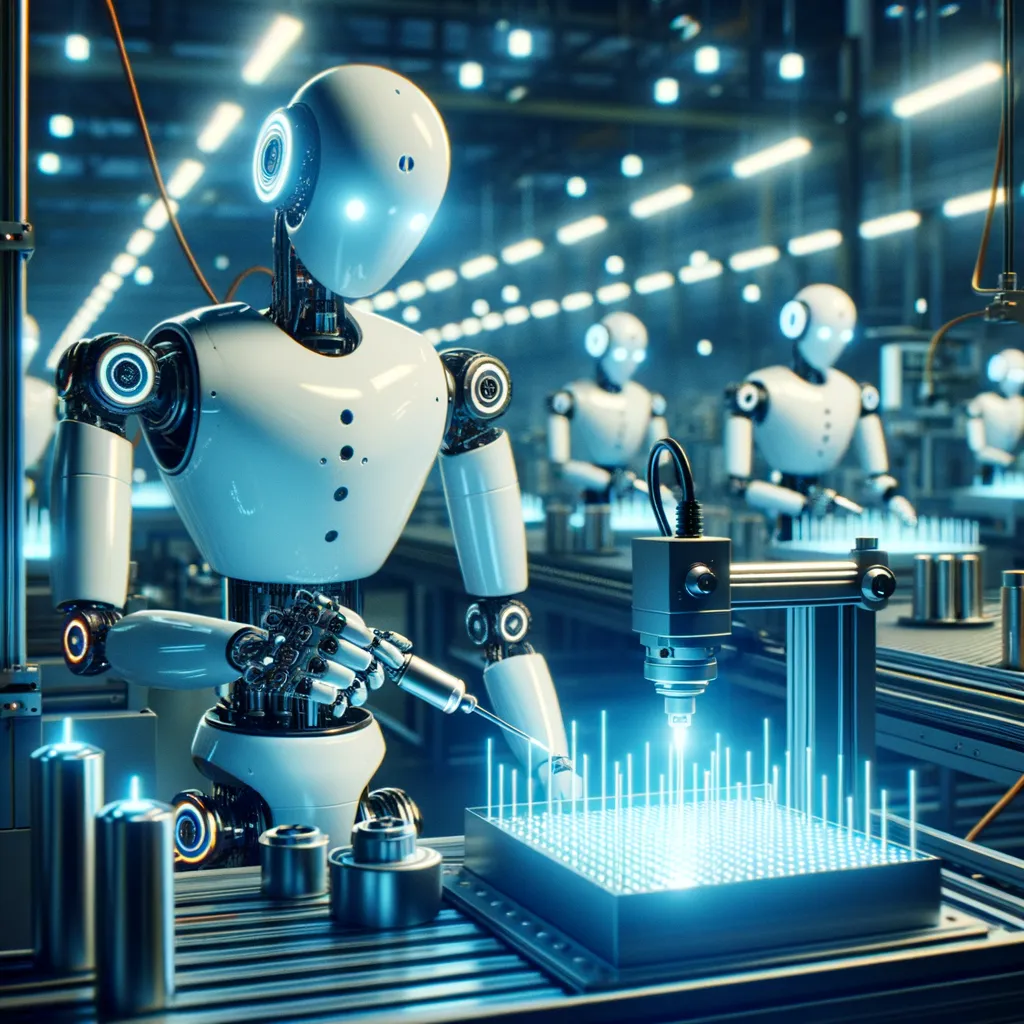Transforming Industries: Large Language Models in Automation Success

Don’t just follow the conversation—lead it.
This is an example of an automated blog using AI. Want something similar for your business? Let's talk.
We will contact you within 24 hours.
Automating Success: Large Language Models Leading the Way
In an era where digital advancements define the competitive edge, the integration of Large Language Models (LLMs) into business operations is reshaping industries by unlocking new efficiencies and avenues for growth. LLMs, such as OpenAI’s GPT-4 and Anthropic’s Claude, are pioneering the future of automation, especially within the manufacturing sector1.
Bridging Knowledge Gaps
LLMs serve as conversational interfaces between humans and machines, bridging significant knowledge gaps in the manufacturing industry. By analyzing vast datasets, they elucidate complex databases, streamline workflows, and enhance production efficiency2. An expected 40% of working hours in various sectors could be influenced by the integration of these AI models1.

A Gateway to Innovation
Beyond manufacturing, Slack’s engineering success story exemplifies the versatility of LLMs. By combining Abstract Syntax Tree (AST) transformations with the intelligent capabilities of LLMs, Slack achieved an 80% success rate in automatically converting 15,000 tests3. This initiative saved substantial developer effort, highlighting LLMs’ potential to revolutionize software engineering.
Enhancing Productivity Across Industries
Generative AI, through LLMs, is not only about efficiency but also creativity. Businesses are utilizing LLMs to generate content, create personalized ad campaigns, and improve customer interactions4. In customer service, these models enable enhanced issue resolution and reduced handling times, transforming customer support landscapes5.
The Broader Economic Impact
The economic potential of generative AI is profound, with the potential to add up to $4.4 trillion annually across various industries6. By automating tasks traditionally reliant on human input, businesses can achieve productivity improvements of up to 40% in certain areas7. This transition facilitates cost reductions and drives operational efficiency.
AI Integration in Other Business Verticals
Innovative applications continue to propel industries forward. In healthcare, generative AI aids in accelerating drug discovery processes and improving imaging technologies8. Meanwhile, in the banking sector, it holds the potential to add $340 billion annually if fully implemented9.

Charting the Future of AI in Business
As businesses chart the course of their digital transformation journeys, the tailored application of AI solutions becomes paramount. At NeuTalk Solutions, we specialize in customizing AI and FullStack Engineering solutions to meet unique business needs, delivering both a robust AI interface and meaningful insights.
Interested in discovering what AI can do for your business? Contact us to discuss bespoke solutions that harness the power of LLMs and explore the potential of advanced generative AI.
References
Footnotes
https://www.weforum.org/stories/2024/04/why-large-language-models-are-so-important-for-the-future-of-the-manufacturing-industry/ ↩ ↩2
https://www.infoq.com/news/2024/06/slack-automatic-test-conversion/ ↩
https://www.mckinsey.com/capabilities/mckinsey-digital/our-insights/the-economic-potential-of-generative-ai-the-next-productivity-frontier ↩
https://www.cxtoday.com/contact-centre/20-use-cases-for-generative-ai-in-customer-service/ ↩
https://aws.amazon.com/blogs/apn/how-datasaur-reimagines-data-labeling-tasks-using-generative-ai-on-aws/ ↩
https://yourstory.com/2024/09/large-language-models-revolutionising-content-creation ↩
https://www.forbes.com/sites/markminevich/2023/10/07/generative-ai-unleashed-charting-the-enterprise-future/ ↩
https://mckinsey.com/capabilities/mckinsey-digital/our-insights/the-economic-potential-of-generative-ai-the-next-productivity-frontier/ ↩
